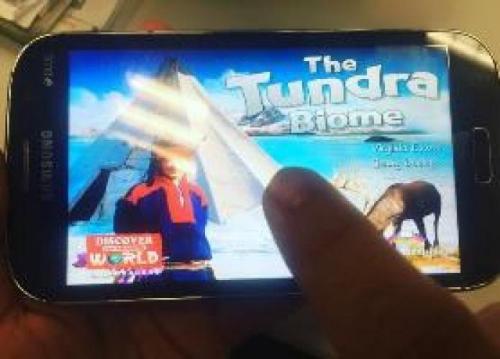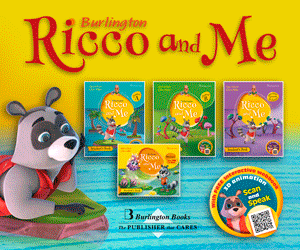We tell students to turn off their mobile phones in class, but should we be telling them to turn them on? Can we use such technology for educational purposes?
Here’s a synopsis of the findings of a British study on how mobile phones help learning in secondary schools. It was funded by the government as part of their e-strategy “Harnessing Technology.”
In spite of school policies banning mobile phones in class, teachers in three schools explored ways of using students’ own phones and borrowed smart phones for learning. As a result, students had permission to use the mobiles for activities such as: timing experiments with the stopwatch; photographing apparatus, models, and experiments for reports; bluetoothing project material between group members; receiving SMS & email reminders from teachers; synchronising timetables and setting reminders; connecting remotely to the school learning platform; accessing revision sites on the Internet; creating short narrative movies; downloading foreign language podcasts; using GPS to identify locations, and transferring files between school and home.
The study found that school heads and parents were supportive of the project and that in every case, other teachers became interested and involved, and the project teachers decided to continue using mobile phones.
Now here’s some thoughts from Nicky Hockly of The Consultants-E on what to keep in mind if you want to start using m-learning.
You´ve decided to introduce some mobile learning into your teaching. Where to start? What to do? Before you focus in on possible content and activities, there are some wider issues that you need to explore. You want your use of mobile and handheld technology with learners to be principled and coherent, rather than adhoc and, well, incoherent. You need to have a clear idea of why you´re getting your learners into m-learning, and what benefits it will bring them. How your use of m-learning relates to overall pedagogical principles will not only help you decide what to do, but reassure your students that you know what you are doing and why!
The first question to ask yourself is: Why do I want to use mobile learning? Here are some possible reasons:
- You like technology
- You want to try out something new with your learners
- You’ve seen your learners all have smart phones or iPods / iTouches already. Why not get them using these for learning?
- A few of your learners have asked you to recommend apps, games and other mobile-friendly content they can use out of class
- You’ve read/heard about the benefits of informal learning
The second question to ask yourself is: How can I use mobile learning effectively with my learners?
Answer: you need to relate your use of mobile learning to wider pedagogical issues. Here are what I see as some of these issues. I imagine these issues as a series of clines or continuums. It´s not a case of one or the other, but a matter of degree. Each cline lends itself to a series of questions you can use as check list.
in the classroom ————————————————— on the move
Are you going to get your learners to use handheld devices regularly in the classroom (e.g. to access dictionaries, to research on the web, to take polls…)? Or are you going to encourage your learners to use their own handheld devices outside the classroom for independent study (e.g. to play games, to listen to podcasts, to learn vocabulary…) on the move and in their spare time? Or both? It may be easiest to start by simply recommending a number of good apps to your learners for their own informal learning. Make this optional – encourage only those students interested enough to try this out. Get them to report back regularly to the class. The enthusiasm may spread to other learners. Or not. Mobile self-study may not be everyone’s cup of tea. But it may be some learner´s cup of tea. And that´s better than no tea at all!
class sets ————————————————————– own devices
What handheld devices will your students use? Smart phones, netbooks, e-readers, iTouches…? And whose devices will they use? Will you or your institution invest in class sets (e.g. of iTouches or netbooks), or will your learners need to use their own devices? Or both? What if only some learners have handheld devices, or if everyone has a different make of phone? How effective can classroom-based mobile work be if everyone has a different device and operating system? It makes a lot of sense for learners to use their own devices for out of class , optional, on the move mobile learning, and class sets in the classroom for more formal learning activities…
rich content ————————————————— discrete content
What about the content that will be used on the mobile devices? Is it going to be rich content that includes multi-media (images, audio, video), the chance to interact with others via social networking, and access to web resources? Or are you going to focus your learners on discrete content such as quizzes, polls, SMS, simple games, and apps? Or both? Given the danger of assuming that mobile learning only means SMS or apps, it makes sense to at least explore rich content options, and to refer your learners to these both for in class work, and for out of class self study. Don’t make the mistake of thinking mobile=apps, or mobile=SMS.
push content —————————————————– pull content
And how is this mobile content going to reach your learners? Are you the teacher going to ‘push’ content out to your learners? In other words, are you going to be responsible for sending mobile-friendly content such as quizzes, SMS-based content, audio and video to your learners? Or are your learners to ‘pull’ in content themselves? In other words, are they going to search for and access mobile-friendly content on their own, depending on their own interests and needs? Or both? And how does this fit into the clines above? Will you focus mainly on pushed content for learners’ out of class work, and mainly on pulled content in the classroom? Or the other way round? Or a mixture of both, in both contexts?
strategic use ———————————————————- discrete use
And related to the previous cline, is your use of mobile learning overall going to be strategic – that is, learners use handheld devices as a resource and tool covering a wide range of functions, in every class? Or is your use of mobile learning going to be discrete – that is, learners use handheld devices every now and again, for ´one-off´ activities? Or both? How about strategic use of class sets of handled devices in the classroom, and discrete use as optional for out of class self-study work, for example?
Once you’ve come up with sensible answers for some of the above questions, you’re ready to start trying out some mobile learning with your classes!
Visit www.clilreaders.com for amazing, educational, mobile apps by Express Publishing!




